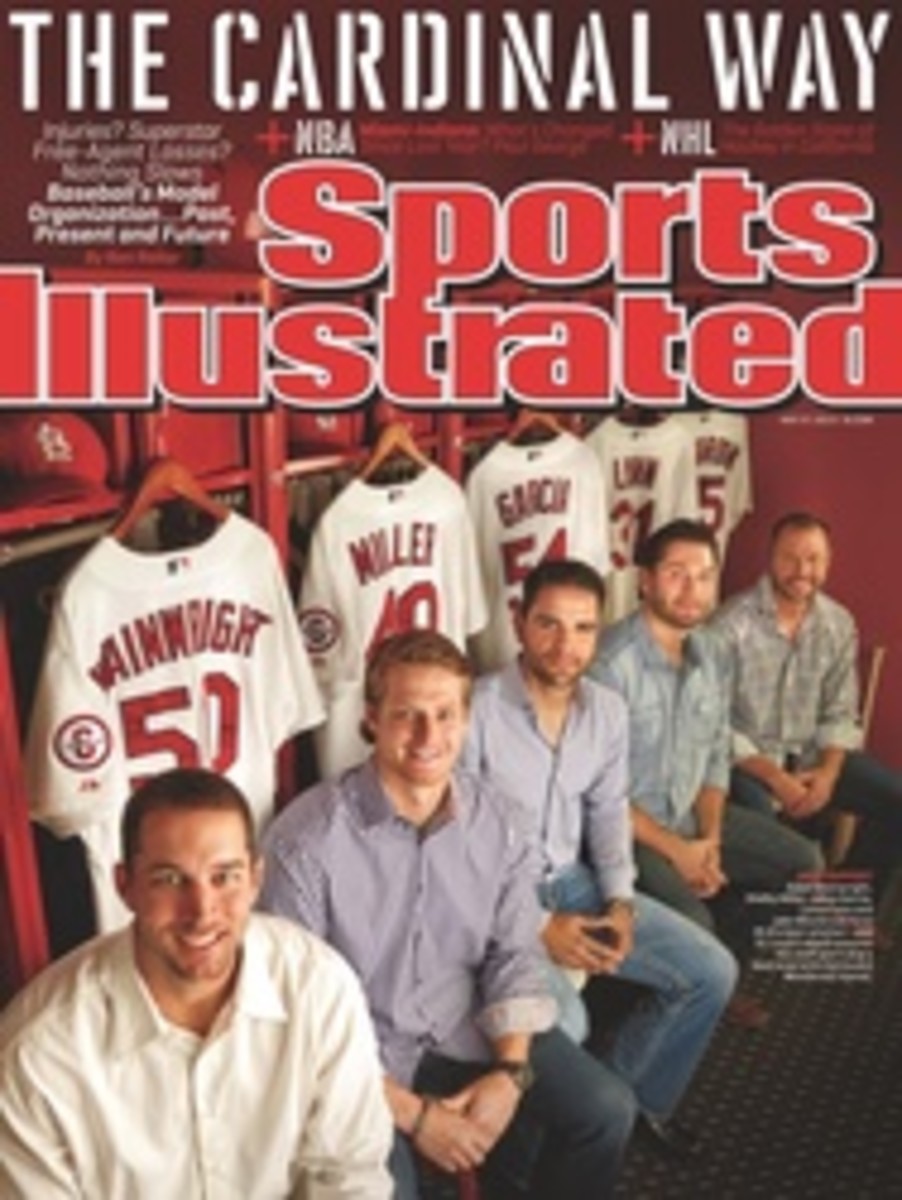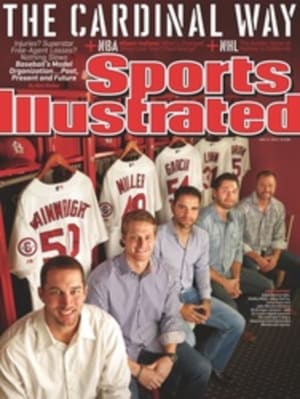
The Joy Of Six
The Original Six is the answer to all the best hockey questions, from "What are the most storied NHL franchises?" to "Which of his teeth does Bobby Hull brush first?"
It's also the theme of the second round of the Stanley Cup playoffs, in which the Blackhawks are facing the Red Wings and the Bruins are playing the Rangers. That leaves only the Canadiens and the Maple Leafs idle among the league's so-called Original Six—the six teams ordained by God during the six days of creation.
You know them as the teams with the coolest uniforms and oldest rivalries, but from 1942 to '67—from World War II to Vietnam—they were the only teams in the NHL, a league of hard men with blunt names like Punch, Gump, Butch, Toe, Mush and Muzz. Their heads were unburdened by helmets or care as they more or less invented hockey.
New York and Boston last met in the playoffs in 1973: The Rangers won in the quarterfinals, avenging their loss to the Bruins in six games in the Cup finals the year before. They might not meet again in the postseason for decades, and the same is true for the Wings and the Hawks, who will be in different conferences starting in 2012--13. But four of the Original Six used to meet every season. Because the league played 70 regular-season games to eliminate just two teams, the remaining quartet played frenetic, best-of-seven semifinals for the right to compete for the Stanley Cup. In doing so they created the unsustainable intensity of postseason hockey.
In Game 1 of the Bruins-Rangers series last Thursday, Boston's Johnny Boychuk hit the left post with a tenth of a second left in regulation and the right post in overtime before teammate Brad Marchand went five hole for the game-winner. Playoff hockey has the pace and implausibility of a Jerry Bruckheimer movie, all car chases and fireballs and men hanging from helicopter skids. And the Original Six remain its marquee stars, the last link to an age when the NHL had fewer teams than Larry King had marriages. So there are two things resurfacing this week: Zambonis, and much of North America's history.
When coffee baron Frederic McLaughlin bought the Portland Rosebuds in 1926 and moved them to Chicago, he renamed the team after the 86th Infantry "Blackhawk" Division he commanded in World War I. His wife, Broadway dancer Irene Castle, had already introduced Americans to the bob haircut and the foxtrot before making her greatest contribution to pop culture: She drew a gallant Indian head for the new team's sweaters. It remains the best logo in all of sports.
Hockey is poetry in traction. The elder Oliver Wendell Holmes is reflected in the Bruins' jerseys, adorned as they are with a B at the hub of eight spokes. In 1858 the poet called the Massachusetts statehouse "the hub of the solar system," giving a city its nickname and an NHL team its crest. Holmes also coined the word that would make surviving a hockey career possible: anesthesia. After a hit by Boston's Vic Stasiuk triple-fractured the jaw of the Rangers' Red Sullivan during the 1958 playoffs—the last time before last week that the two teams played a postseason overtime—a suited Stasiuk visited Sullivan in the hospital to say he was sorry ... and that, yes, he had been trying to hit his rival. "At least he was honest," Sullivan said. "I told him that if I get a good shot at him next season, I'll try to hit him too."
And he could, because a fight that began in New York on Saturday might resume in Boston on Monday. Andy Hebenton played for both teams from 1955 to '64 over a then league-record 630 consecutive games; in 1960, while with the Rangers, he lost seven teeth in seven days. In the NHL a mouthful of teeth was but a monthful of teeth.
Only one man in history played for all of the Original Six, including a single game with the Rangers. Vic Lynn, who died in 2010, was also among the first to glimpse the modern-day NHL. In 1963, while coaching the Saskatoon Quakers on an exhibition tour of Europe, Lynn said of the players on that continent, "At passing and skating, they're as good as any hockey players in the world."
It was a few years later that a Swede named Ulf Sterner became the NHL'S first European-trained player. But hockey's global talent pool was growing, and so was North America's appetite for teams. The NHL doubled in size in 1967, when the stately six were joined by cartoonish Penguins and Golden Seals, nouveau-riche franchises with a swinging vibe. The Flyers wore on their chests a P with a feathered Farrah Fawcett hairdo. The purple-and-gold crown on the Kings' jerseys called to mind a bottle of Crown Royal.
The NHL is now bloated with 30 teams, even as it has been eminently improved by its Krejcis and Lundqvists, Hossas and Zetterbergs. And yet, in many ways, the game hasn't changed at all. To glimpse left wing Bryan Bickell last week smiling above a Blackhawks logo conjured during the Coolidge administration—his heart on his sleeve, his teeth on a shelf—is to see all the way back to the beginning of time.
Follow @SteveRushin
Where do the Original Six matchups rank among the most classic rivalries in sports?
Let us know on Twitter by using #SIPointAfter and following @SteveRushin
PHOTO
DAMIAN STROHMEYER/SPORTS ILLUSTRATED

